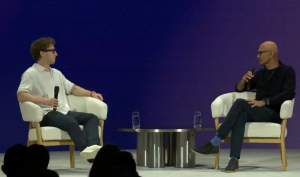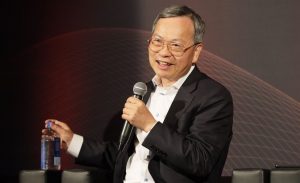TinierMe Builds Virtual Economy Around U.S. Anime Culture
![]() Social gaming is one of those things that we think about when we’re bored, or we see a friend win a new badge on Facebook (so glad to see that trend died down on Twitter). But the market behind it is something that’s becoming more and more tangible as the web spans the globe, younger generations integrate it with their upbringing, and payment mechanisms are developed around it.
Social gaming is one of those things that we think about when we’re bored, or we see a friend win a new badge on Facebook (so glad to see that trend died down on Twitter). But the market behind it is something that’s becoming more and more tangible as the web spans the globe, younger generations integrate it with their upbringing, and payment mechanisms are developed around it.
What we’re in the midst of is an economic shift in how and where money is spent, with virtual goods becoming a focal point for many social gaming platforms. And where there’s money and a large population of users, there’s also marketing.
The incorporation of brand marketing into virtual environments is something I’ve been watching since the early days of the SIMS. We all thought Second Life was going to revolutionize brand relations—and it did, in its own way. But so much more has happened since then, and the organic development around this virtual market has shed light on how virtual environments are lending to real cash spending, user interaction and fresh marketing campaigns. Seeing how businesses are shaping themselves around these trends is certainly worth looking at.
Take Anime for example. It’s got its own cultural following, spawning in Japan and all but taking over the world. TinierMe is a virtual world that’s all-encompassing of this growing culture, with a growing number of US and Philippine users on its site. They launched in April of this year, amidst a migration of such virtual worlds to Facebook’s platform. Considering the global expanse of its network (its Japanese version of TinierMe is @games), the company realized early on that it would have to address the many different needs of its disparate population, especially if it wanted to monetize its social gaming platform.
“We aim to implement winning virtual strategies that work for international audiences by taking their values and cultural focus into consideration in our game development,” says a TinierMe representative, keying in on what those values really are. Some interesting stats came out of the discussion I had with TinierMe CEO Masaru “Nogi” Ohnogi, highlighting the features the company built into its social game.
“TinierMe has a global audience, but the focus is in the U.S. and Philippines. Some major differences in the user base is their attitudes. Japanese users are more shy, and hesitant to communicate in virtual worlds. We provide more private rooms for them,” Nogi explains. “U.S. users are less shy, and will start a conversation in the open.”
![]() The spending patterns around TinierMe’s user base are also quite interesting, with the average Japanese gamer spending an average of $100 per month on virtual goods. That’s five times more than U.S. gamers are likely to spend monthly, and far above what the average user from the Philippines will spend on virtual products.
The spending patterns around TinierMe’s user base are also quite interesting, with the average Japanese gamer spending an average of $100 per month on virtual goods. That’s five times more than U.S. gamers are likely to spend monthly, and far above what the average user from the Philippines will spend on virtual products.
This has a big impact on how TinierMe structures its virtual currency and goods, with two types of coins you can either purchase or earn. Undoubtedly, a large portion of Philippine users will be active within TinierMe’s virtual realm in order to earn redeemable points, while Japanese users are quick to open their wallets and buy them outright.
From there, TinierMe has a tiered product system to appeal to every consumer level, just like the real world. But given the amount of money a Japanese user is able to spend on their virtual experience, TinierMe finds a myriad of ways to market to this audience. Incorporating celebrities has been a common format for many virtual worlds, and the trend isn’t lost on TinierMe.
Building a market around those celebrities, TinierMe incorporates avatar clothing and other items, so that the long-tail of gamer participation can find its way to every user level, far beyond the hour or so a celebrity makes a virtual appearance (speaking of virtual appearances, one of TinierMe’s more successful celebrity campaigns was with Hatsune Miku, who sold out a hologram concert).
Melding virtual environments and their commerce around regions and culture is something we’ll see more companies do, especially as these worlds make their way across our own (IMVU, for instance, is localizing its virtual worlds for European audiences). But one thing for TinierMe remains the same—its entire community is built around the common denominator of Anime and Manga, uniting far more people than it separates.
A message from John Furrier, co-founder of SiliconANGLE:
Your vote of support is important to us and it helps us keep the content FREE.
One click below supports our mission to provide free, deep, and relevant content.
Join our community on YouTube
Join the community that includes more than 15,000 #CubeAlumni experts, including Amazon.com CEO Andy Jassy, Dell Technologies founder and CEO Michael Dell, Intel CEO Pat Gelsinger, and many more luminaries and experts.
THANK YOU













